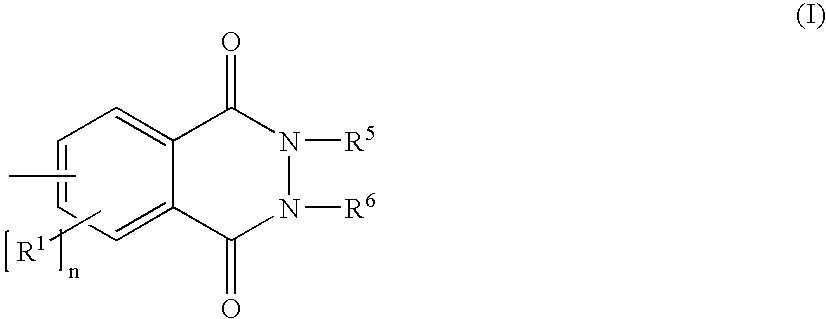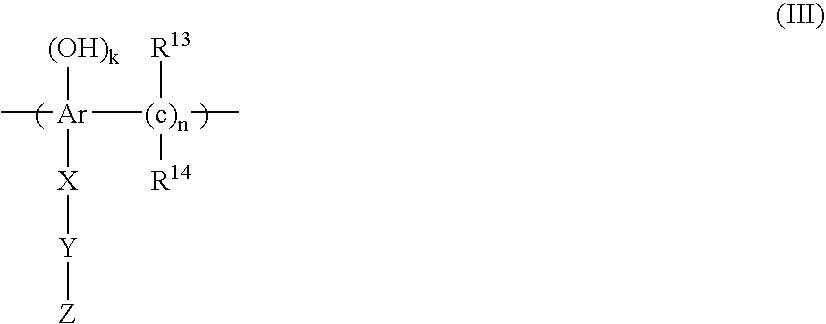Negative working, heat-sensitive lithographic printing plate precursor
- Summary
- Abstract
- Description
- Claims
- Application Information
AI Technical Summary
Benefits of technology
Problems solved by technology
Method used
Image
Examples
invention examples 10-13
Preparation of the Lithographic Base.
[0136] The preparation of the lithographic support for the Invention Examples 10-13 was carried out in the same way as described for the Comparative Examples 2-7 and Invention Examples 8 and 9.
Preparation of the Printing Plate Precursors 10-14.
[0137] The printing plate precursors were produced by first coating the coating defined in Table 9 onto the above described lithographic base. The coating solution (comprising a mixture of isopropanol / water for Invention Examples 11 and 13 and for Invention Examples 10 and 12 only water) was applied at a wet coating thickness of 30 μm and then dried at 130° C. for two minutes. The dry coating weight was 0.5 g / m2 for invention Examples 10 and 11 and 0.1 g / m2 for invention Examples 12 and 13.
TABLE 9Composition of the first coating (g / m2).InventionInventionInventionInventionExampleExampleINGREDIENTS GExample 10Example 111213Flexo-blau 630 (1)0.020.020.020.02SP-01 (2)0.480.480.980.98
(1) Flexo-blau 630 St...
invention example 14
[0142] The printing plate precursor of Invention Example 13 was mounted on a Sakmai Oliver 52 press using K+E Novavit 800 Skinnex available from BASF Drucksysteme GmbH as ink and Emerald premium 4% as fountain. After 100,000 prints the 1% highlight of a 200 lpi screen was still rendered on the print indicating an excellent run lenght resistance.
PUM
 Login to View More
Login to View More Abstract
Description
Claims
Application Information
 Login to View More
Login to View More - R&D
- Intellectual Property
- Life Sciences
- Materials
- Tech Scout
- Unparalleled Data Quality
- Higher Quality Content
- 60% Fewer Hallucinations
Browse by: Latest US Patents, China's latest patents, Technical Efficacy Thesaurus, Application Domain, Technology Topic, Popular Technical Reports.
© 2025 PatSnap. All rights reserved.Legal|Privacy policy|Modern Slavery Act Transparency Statement|Sitemap|About US| Contact US: help@patsnap.com



